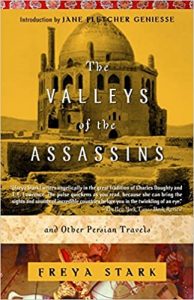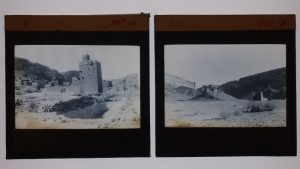Exploring the Middle East
This coming Sunday (31st January), marks the 128th anniversary of the birth of the explorer Dame Freya Stark (1893-1993). Dame Freya was renowned for her determination and bravery in travelling to countries across the Middle East where few Europeans (particularly women) had ever travelled before.

Having had many setbacks in her early life, including being physically scarred by a machine at her mother’s factory, Freya enjoyed reading great works of the era. This included Middle Eastern folk tales such as the treasures of ‘One Thousand and One Nights’. Whether it was these works which had inspired her interest in the Middle East, she enrolled at the School of Oriental and Asian Studies in London to study Arabic. Whilst World War One would impact on the completion of her studies, this would not stop Freya from wanting to explore these countries further.
Freya first travelled to the Middle East in 1927 and in 1930 set out for Persia – the ultimate goal of her travels. Despite suffering with illnesses such as Malaria and Dysentery, she managed to locate the Valleys of the Assassins, which was the fabled based of the 11th century Islamic sect of Nizari warriors. This established Freya as one of her generation’s most intrepid explorers and she wrote a book about her experiences which is held within the collections.

These achievements led to Freya being awarded the Richard Burton Memorial medal at the Society in 1934. There is a collection of material held in the Society’s archives relating to the awarding of this medal and we are also fortunate to hold a collection of glass slides which showcase Freya’s travels across the Hadhramaut (known as modern day Yemen).

The outbreak of World War Two did not stop Freya’s passion for travelling and she contributed as an advocate for the British cause, working to deter the Arabs from joining the central forces. She continued to travel to countries such as: Turkey, Yemen, Afghanistan, India, Egypt, and Kurdistan and founded the Brotherhood of Freedom in Cairo. This was a network of Allied sympathisers who tried to convince the Egyptians that they were better off sticking with the side of the Allies. Whilst the success of this was debated, membership grew to 75,000 before the organisation was suppressed in 1952.
Dame Freya wrote more than two dozen books about her travels and experiences and they were renowned for communicating the real lives of people in the countries that she travelled to. This was particularly significant in a period where few people interacted with these communities. Dame Freya could be regarded as being ahead of her time in that she was not going to let societal conventions of the period stop her from getting out and exploring the world.
Lecture on Sir William Jones:

Jonathan’s lecture was based upon research that he undertook at the British Library while working on a doctoral placement to investigate Jones’s Arabic and Persian manuscripts. The Jones collection contains 118 Arabic, Persian, and Urdu manuscripts, 69 Sanskrit manuscripts, and nine Chinese manuscripts, which were sent to Sir Joseph Banks in 1792 for presentation to the Royal Society in the event of Jones’ death, which in fact occurred prematurely in 1794. They were later transferred to the India Office Library in 1876. The project has led to improved descriptions of Jones’ manuscripts, and these have been transferred to the electronic catalogue. Jonathan’s research has also resulted in an article in the Journal of the Royal Asiatic Society (December 2020), “Building a Library: The Arabic and Persian Manuscript Collection of Sir William Jones”, which formed the basis for his talk.

Royal Asiatic Society Of Great Britain and Ireland – YouTube
